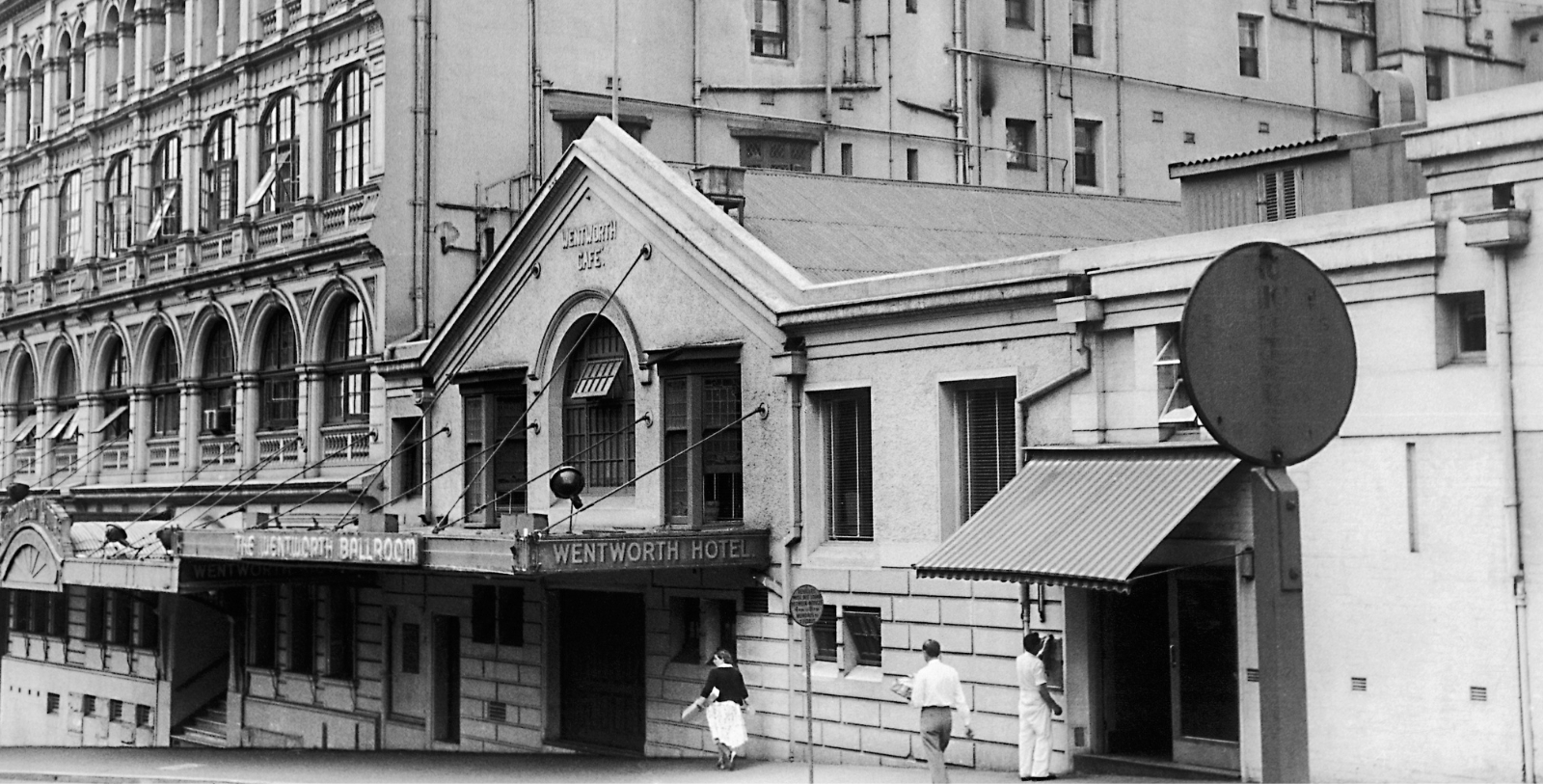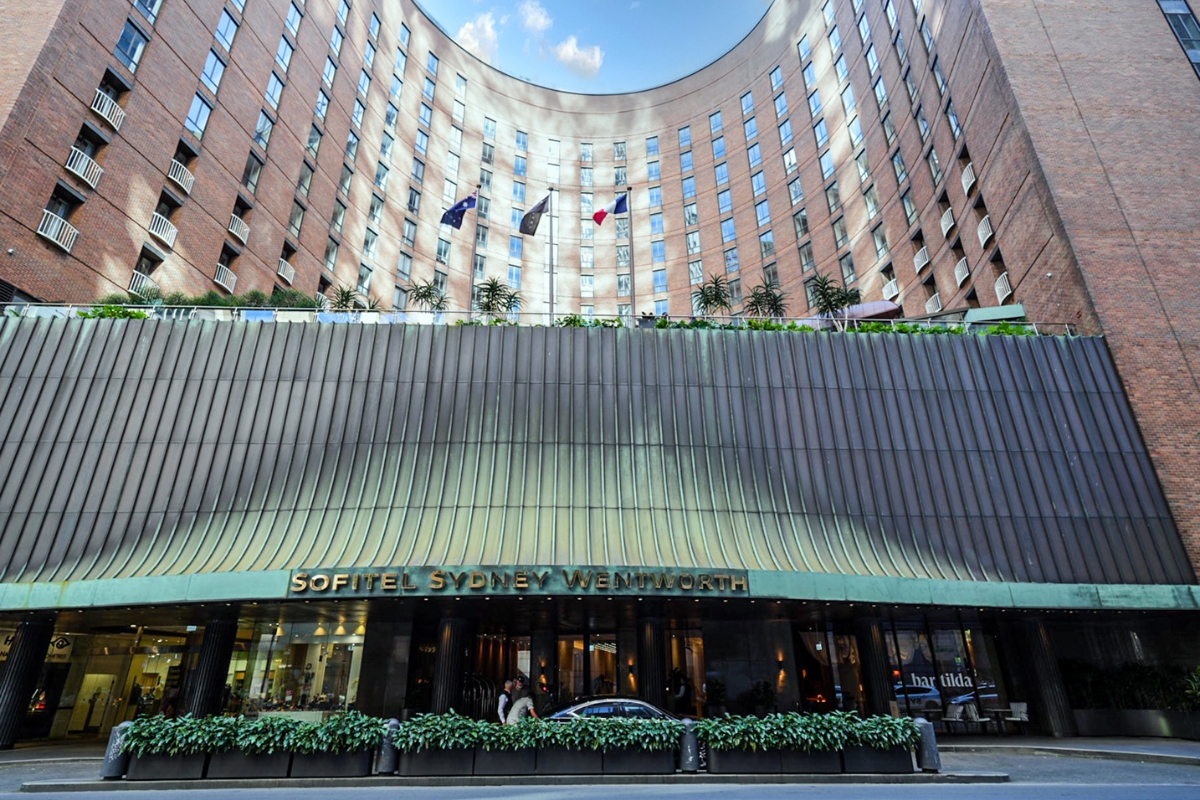Receive for Free - Discover & Explore eNewsletter monthly with advance notice of special offers, packages, and insider savings from 10% - 30% off Best Available Rates at selected hotels.
history
Discover the Sofitel Sydney Wentworth, which was the first five-star hotel to ever open in Sydney, Australia.
Sofitel Sydney Wentworth, a member of Historic Hotels Worldwide since 2023, dates back to 1966.
VIEW TIMELINEIn 1823, the colonial government of New South Wales decided to construct three two-story residences in Sydney’s Church Hill neighborhood. (For reference, New South Wales was one of the colonies that formed the new nation of Australia in the early 20th century.) Taking several months to finish, the homes quickly emerged as important institutions in the developing city. One building in particular, No. 3 Church Hill, was obtained by William Charles Wentworth, a notable politician in the colony who would go on to significantly influence Australian history. In fact, Wentworth even co-founded the country’s first newspaper, The Australian, in No. 3 Church Hill. However, the dwelling had been turned into a boarding house around the middle of the century, operating under the name “Wentworth House.” One of the few lodgings available in Sydney at the time, the Wentworth House enjoyed considerable success from the moment it opened. Indeed, the original proprietors had opted to incorporate the neighboring structure as extra space in order to meet the mounting demand for accommodation. The site then underwent further growth at the height of the Victorian era, with then-owner Mary Hayes renaming it as the “Wentworth House Family Hotel.” Unfortunately for Hayes, the structure experienced a structural incident that required its complete reconstruction. Nevertheless, the building remained one of Sydney’s best destinations, even after Hayes sold the business to the entrepreneurial Hannah Maclurcan in 1903.
Maclurcan proved to be a worthy successor, instituting her own series of construction projects that solidified the Wentworth House Family Hotel’s status in the community. Perhaps the greatest feat Maclurcan achieved was the creation of a spectacular meeting venue called the “Wentworth Ballroom.” The Wentworth Ballroom swiftly established a reputation among Sydney’s social elite and even once hosted King Edward VIII of the United Kingdom. The Wentworth Family House Hotel remained under the dedicated stewardship of the Maclurcan family for years, with Hannah Maclurcan’s son, Charles, taking over during the Great Depression. Now enlarged to feature over 100 guestrooms, the building itself had grown to resemble a modern hotel, too. But in the 1950s, airline operator Qantas Empire Airways had come to acquire the historic hotel. Headquartered right next to the site, the company specifically wanted to manage the hotel as a way to host the many tourists traveling to the city on its own planes. However, Qantas also envisioned completely reconfiguring the building to better reflect the contemporary preferences of its target market. Construction on the hotel’s revitalized appearance began a decade later and continued for several years. The work proved to be a mammoth undertaking, resulting in the creation of a stunning 15-story edifice that majestically dominated the skyline of downtown Sydney. Architectural firm Skidmore, Owings, and Merill had overseen the design overhaul, infusing gorgeous Mid-Century Modern motifs throughout the new semi-circular façade.
When the work finally concluded in 1966, the reborn Wentworth Hotel rapidly emerged as Sydney’s finest retreat and even became its first five-star hotel. Its unrivaled French-inspired hospitality attracted a massive clientele base, which included influential figures from around the world. Notable guests like Audrey Hepburn, Sophia Lauren, and Marlon Brando were just a few of the many notable individuals to seek a reservation at the Wentworth Hotel. In 1969, the wives of the Apollo 11 astronauts—Jan Armstrong, Joan Aldrin, and Pat Collins—met with dozens of reporters inside the structure after their husbands had famously conducted the first lunar landing earlier that year. Even members of the British Royal Family visited the hotel, such as Queen Elizabeth II of the United Kingdom, who stayed on-site during a trip to inaugurate the iconic Sydney Opera House in 1973. (Other royals included her son and heir, the future King Charles III, and his former wife, Diana, Princess of Wales. The two danced in the ballroom amid an official Royal Visit to Australia in the early 1980s.) Now known as the “Sofitel Sydney Wentworth,” this fantastic historic hotel has since remained one of Sydney’s most prestigious destinations. Still retaining its coveted five-star status, the Sofitel Sydney Wentworth is currently home to 436 exquisite guestrooms, two terrific upscale dining establishments, and 15 world-class event spaces. Sofitel Sydney Wentworth is also just moments away from numerous cultural heritage attractions like Circular Quay, The Rocks, Darling Harbour, and the UNESCO-recognized Sydney Opera House.
-
About the Location +
Sofitel Sydney Wentworth stands proudly on Phillip Street in the heart of Sydney’s central business district, a location deeply connected to the city’s heritage and modern vibrancy. The hotel is situated on the traditional lands of the Gadigal people of the Eora Nation, who lived along the harbor and its waterways for millennia. Their enduring cultural presence is part of Sydney’s story, and Sofitel Sydney Wentworth acknowledges their custodianship of this land with respect to Elders past and present.
Currently Australia’s largest city, Sydney is a metropolis with a fascinatingly rich heritage. Indeed, its history harkens back millennia to the Aboriginal Australians, who had lived in the area of modern-day Sydney for some 30,000 years. Making great use of the region’s deep natural harbor, the Aboriginal Australians developed a network of small coastal communities that thrived on fishing. The villages themselves were arranged via a clan system, which observed uniquely different sets of cultural practices, beliefs, and even languages. Among the most prominent clans to exist around the Sydney area were the Dhaurg and Dharawal people, who dominated the local political landscape for generations. In fact, it was a branch of the greater Dharawal clan that met British explorer James Cook when he “discovered” the site in the late 18th century. Although they were unsuccessful in establishing peaceful relations with the local Aboriginal Australians, Cook and his men nonetheless recorded their interactions. But they also collected a variety of plant life and charted the undulating geography, making the first maps of the region. Calling the location “Botany Bay,” Cook and his crew left to report their findings to the British Parliament after spending several days in the area.
The research subsequently inspired a second expedition led by Arthur Phillip in 1788. Finding Cook’s original landing spot unsuitable for a prospective settlement, Phillip sailed his fleet of 11 ships further into the harbor to a place he called “Port Jackson.” He then founded a nascent community along the shoreline that he named “Syndey” after the sponsor of the trip, Thomas Townshend, 1st Viscount Sydney. The little community then emerged as the nucleus of a colony referred to as “New South Wales.” However, the city’s population was largely constituted of convicts since New South Wales as a whole was originally meant to function as a penal colony. Sydney’s colonial administrators directed Sydney to be small in stature as such, surviving just on subsistence agriculture. British authorities largely forbade the presence of large industries as well, especially shipbuilding. The imposed economic conditions and harsh environment thus made life in early Sydney difficult, resulting in periodic famines that could only be resolved through infrequent trade with Great Britain. Relations with the local Aboriginal Australians remained tense, too, leading to episodic bouts of conflict. Bands of convicts and free settlers harbored their own hostilities against the colonial government in Sydney, even spawning a few short-lived rebellions that called for increased autonomy.
The situation in Sydney fortunately turned for the better in the early 19th century, once adventurous pioneers managed to find a path to the fertile plateaus that lay west beyond the surrounding Blue Mountains. Now bearing access to lucrative farms, Sydney finally enjoyed a stable food supply that encouraged more settlement. International trade soon flourished, too, incentivizing even more British settlers to relocate to Sydney. Helping to spur this development was a new colonial governor named Lachlan Macquarie, who oversaw a series of public building projects that created dozens of hospitals, churches, and schools. Macquarie received significant help from Francis Greenway, a convict-turned-architect who created the Georgian-style motifs that defined most of Sydney’s historic downtown core for decades. But Macquarie also refined the local legislative codes that gave more civil rights to the residents living in Sydney, regardless of their criminal background. These legislative changes continued after Macquaire’s departure in 1821, culminating with the elimination of forced convict migrations during the 1840s. Sydney was then declared a city not long thereafter, functioning as the home for the New South Wales Legislative Council.
Sydney’s economy only continued to expand throughout the remainder of the century, which left it in constant competition with the city of Melbourne. Additional construction projects subsequently commenced that eventually created iconic structures like the University of Australia, the Australian Museum, and the General Post Office. The size of Sydney had grown considerably, eclipsing more than one million residents by the early 20th century. Despite its considerable influence, Sydney did not become the national capital when all the disparate Australian colonies officially federated into the state of “Australia” in 1901. Nevertheless, the city kept maintained its prestigious reputation for years to come, eventually becoming one of the foremost communities in the British Empire and its successor, the Commonwealth of Nations. Its citizens even played an integral role in fighting for the Allies during both World Wars, with many enlisting to serve in the legendary ANZAC Corps. Sydney is still one of Australia’s most illustrious communities today, continuing to act as the primary cultural center of the entire country. It is the foremost destination for cultural heritage travelers when they go to Australia, finding its distinctive historical landmarks to be incredibly interesting. Among the most noteworthy sites they enjoy seeing include The Rocks, Darling Harbour, the Sydney Harbour Bridge, the Royal Botanic Garden Sydney, and the UNESCO-recognized Sydney Opera House.
-
Famous Historic Guests +
Audrey Hepburn, actress known for her roles in such films as Breakfast at Tiffany’s, Roman Holiday, and My Fair Lady.
Marlon Brando, actor known for his roles in movies like The Godfather, Apocalypse Now, and A Streetcar Named Desire.
Sophia Loren, actress known for her roles in such films as Marriage Italian Style, Two Women, and Yesterday, Today and Tomorrow .
Margaret Thatcher, Prime Minister of the United Kingdom (1979 – 1990).
Diana, Princess of Wales.
Prince Phillip, Duke of Edinburgh.
Queen Elizabeth II of the United Kingdom (1952 – 2022).
King Charles III of the United Kingdom (2022 – present).
George W. Bush, 43rd President of the United States (2001 – 2009).


























